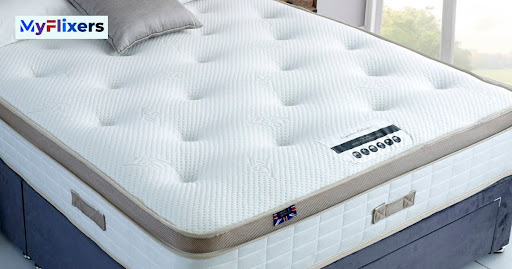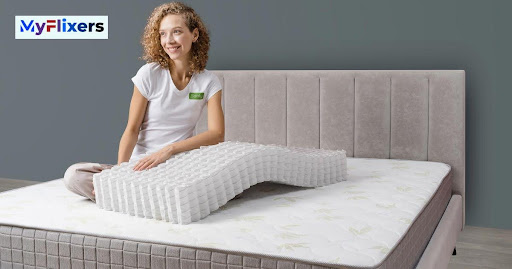Are you dreaming of revolutionizing the way America sleeps? Designing and distributing your own mattress brand can be an exhilarating journey filled with both challenges and rewards. This comprehensive guide will dive deep into custom mattress design, exploring the ins and outs of creating a successful bespoke mattress brand in the competitive USA market. Whether you’re a seasoned entrepreneur or a sleep enthusiast with a vision, this article will provide the knowledge and strategies you need to design and distribute your mattress brand.
Critical Strategies in the D2C Mattress Business

Product Simplification
When it comes to designing and distributing your own mattress brand, less is often more. The key to success in the mattress industry lies in product simplification. Rather than overwhelming customers with countless options, focus on creating a core line of high-quality mattresses that cater to different sleep preferences. This approach makes it easier for customers to choose the right mattress and streamlines your manufacturing and distribution processes.
To choose your core mattress offerings, consider these factors:
- Sleep positions (side, back, stomach)
- Firmness levels
- Temperature regulation
- Support needs (e.g., for back pain or pregnancy)
By offering a concise range of options, you’ll simplify the decision-making process for your customers while maintaining a manageable inventory. This strategy has proven successful for many direct-to-consumer (D2C) mattress brands, as evidenced by the success of companies like Casper and Purple.
Enhanced Customer Experience
In the world of online mattress sales, creating an exceptional customer experience is crucial. When you design and distribute your mattress brand, you have complete control over the customer journey. Your branded mattress business should focus on:
- Seamless online shopping journey: Design an intuitive website that guides customers through the selection process, providing clear information about each mattress option and helping them make an informed decision.
- Generous sleep trials: Offer extended trial periods (e.g., 100 nights) to build trust and reduce purchase anxiety. This allows customers to truly experience your mattress in their own homes, increasing the likelihood of satisfaction and positive reviews.
- Hassle-free returns: Implement a straightforward return policy to boost customer confidence. Consider partnering with local charities to donate returned mattresses, turning a potential loss into a positive community impact.
Your goal is to make buying a mattress online as easy and risk-free as possible for your customers. By focusing on these aspects of customer experience, you’ll differentiate your brand in the crowded mattress market and build a loyal customer base.
Technological Integration
Leveraging technology can set your mattress brand apart and provide added value to your customers. Consider implementing:
- Augmented Reality (AR) for virtual mattress testing: Allow customers to visualize how your mattress would look in their bedroom using AR technology on their smartphones.
- AI-powered sleep tracking technology: Partner with sleep tech companies to offer integrated sleep tracking features in your mattresses, providing customers with valuable insights into their sleep patterns.
- Personalized recommendation engines: Use customer questionnaires and preferences data to suggest the perfect mattress for each individual.
By incorporating these technological advancements, you’ll enhance the customer experience and position your brand as innovative and forward-thinking in the mattress industry.
Customization Options
The trend toward personalization is proliferating in the mattress industry. To cater to this demand and truly design and distribute your own unique mattress brand, consider offering:
- Adjustable firmness levels: Develop mattresses with interchangeable layers or dual-sided designs to accommodate different firmness preferences.
- Modular mattress designs: Create a base mattress with add-on components for customers to customize their sleep experience.
- Customizable layers for different sleep preferences: Offer options for cooling gel layers, pressure relief foams, or specialized support zones that customers can select based on their needs.
By providing these customization options, you’ll appeal to customers looking for a genuinely bespoke mattress experience and set your brand apart from one-size-fits-all competitors.
Sustainability Focus
Eco-consciousness is on the rise, and the mattress industry is no exception. To appeal to environmentally aware consumers and build a responsible brand, consider the following:
- Sourcing eco-friendly materials: Use organic cotton, natural latex, or recycled foams in your mattress construction.
- Implementing green manufacturing processes: Invest in energy-efficient production methods and minimize facility waste.
- Using recycled or biodegradable packaging: Design packaging that protects your mattresses during shipping and minimizes environmental impact.
Highlighting your commitment to sustainability can be a powerful differentiator in the mattress market. For example, Avocado Green Mattress has built a strong brand identity around its eco-friendly practices, attracting environmentally conscious consumers.
Benefits of Direct Consumer Engagement in the Mattress Industry

Higher Profit Margins
One of the most significant advantages of the direct-to-consumer (D2C) model when you design and distribute your mattress brand is higher profit margins. By cutting out intermediaries and controlling your supply chain, you can:
- Reinvest profits into brand growth: Use the additional margin to fund research and development, marketing initiatives, or expansion into new product lines.
- Offer competitive pricing while maintaining profitability: Provide customer value without sacrificing your bottom line.
- Allocate resources to product development and customer service: Invest in continuously improving your mattresses and support infrastructure.
Direct Customer Relationships
Building direct relationships with your customers is crucial for long-term success. Here’s how you can foster these connections:
- Create a community around better sleep: Develop a blog, podcast, or social media presence focused on sleep education and wellness tips.
- Gather and utilize customer feedback for product improvement: Regularly survey customers and use their insights to refine your mattress designs.
- Develop a loyalty program: Encourage repeat purchases and referrals through rewards or exclusive offers.
Engaging directly with your customers will build brand loyalty and gain valuable insights to improve your products and services.
Controlled Brand Narrative
As a D2C mattress brand, you have complete control over your brand story. Use this to your advantage by:
- Crafting a unique brand identity: Develop a compelling brand story that resonates with your target audience and sets you apart from competitors.
- Maintaining consistency across all touchpoints: Ensure your brand message is cohesive across your website, social media, packaging, and customer service interactions.
- Differentiating yourself from traditional mattress retailers: Highlight the benefits of your D2C model, such as lower prices, better quality control, and more personalized service.
Enhanced Data Utilization
Direct access to customer data is a goldmine for improving your mattress business. Use this data to:
- Inform product development decisions: Analyze customer preferences and feedback to guide future mattress designs.
- Personalize marketing efforts: Tailor your messaging and offers based on customer behavior and preferences.
- Predict trends in the American sleep market: Stay ahead of the curve by identifying emerging customer needs and desire patterns.
Challenges to Overcome When Designing and Distributing Your Mattress Brand
Logistical Demands
Managing the supply chain for a mattress brand can be complex. Here are some challenges you’ll need to address:
- Inventory management across the vast USA territory: Develop a network of distribution centers or partner with fulfillment services to ensure efficient nationwide coverage.
- Ensuring timely deliveries coast-to-coast: Implement robust tracking systems and partner with reliable shipping carriers to meet customer expectations.
- Handling returns and exchanges efficiently: Create a streamlined process for managing returns, including options for mattress donation or recycling.
Consider partnering with established logistics providers or investing in robust inventory management systems to overcome these challenges.
Marketing Dependency
Effective marketing is crucial for your mattress brand’s success in the digital age. Focus on:
- Developing a solid content marketing strategy: Create valuable, informative content that addresses common sleep issues and positions your brand as an authority in the industry.
- Building an engaging social media presence: Use platforms like Instagram and TikTok to showcase your mattresses in action and share sleep tips.
- Educating consumers about your unique mattress offerings: Develop explicit, easy-to-understand materials highlighting your mattress designs’ benefits.
The goal is to cut through the noise and establish your brand as a trusted authority in the sleep industry.
High Customer Acquisition Costs
Acquiring customers in the competitive mattress market can be expensive. To reduce customer acquisition costs:
- Focus on customer retention and lifetime value: Develop strategies to encourage repeat purchases and brand loyalty.
- Leverage word-of-mouth marketing: Implement referral programs that incentivize customers to recommend your mattresses to friends and family.
- Optimize your digital advertising spend: Use sophisticated targeting and testing to maximize the effectiveness of your online ads.
Integration of Advanced Analytics in Your Mattress Brand
Harness the power of data to drive your mattress business forward. Use advanced analytics to:
- Inform design decisions: Analyze customer feedback and sleep data to identify areas for improvement in your mattress designs.
- Optimize inventory management: Use predictive analytics to forecast demand and minimize overstock or stockouts.
- Refine pricing strategies: Analyze market data and competitor pricing to ensure your mattresses are competitively priced while maintaining profitability.
Cybersecurity Measures
As an online mattress retailer, protecting customer data is paramount. Implement robust cybersecurity measures to:
- Safeguard customer information: Use encryption and secure payment gateways to protect sensitive data.
- Ensure secure transactions: Implement multi-factor authentication and regular security audits.
- Build trust through transparent data practices: Clearly communicate your data protection policies to customers.
Market Trends and Consumer Shifts in the USA Mattress Industry

Increasing Demand for Personalization
The one-size-fits-all approach is becoming obsolete in the mattress industry. To meet the growing demand for personalization:
- Develop mattresses tailored to individual sleep profiles: Use sleep questionnaires or AI algorithms to recommend the perfect mattress configuration for each customer.
- Offer customizable options for couples: Create split-design mattresses that allow partners with different sleep preferences to customize their side of the bed.
- Address specific health concerns: Design mattresses that target issues like back pain, allergies, or temperature regulation. Visit: MyFlixers
Growth of Sustainability
Eco-friendly mattresses are more than just a trend – they’re becoming an expectation. To capitalize on this shift:
- Explore innovative, sustainable materials: Investigate options like plant-based foams, recycled fabrics, or biodegradable components.
- Implement circular economy principles: Develop programs for mattress recycling or upcycling at the end of their lifecycle.
- Clearly communicate your sustainability efforts: Use transparent labeling and marketing to educate consumers about your eco-friendly practices.
Advancements in Technology
Stay ahead of the curve by incorporating cutting-edge technology into your mattress designs:
- Explore smart fabric innovations: Investigate materials that can actively regulate temperature or provide targeted support.
- Integrate IoT devices: Develop mattresses with built-in sensors to track sleep patterns and integrate with smart home systems.
- Consider using blockchain for supply chain transparency: Implement blockchain technology to provide customers with complete visibility into the sourcing and manufacturing of their mattresses.
The Rise of Smart Mattresses
The future of sleep is bright. Consider developing mattresses with the following:
- Built-in sleep tracking capabilities: Integrate sensors that monitor sleep cycles, heart rate, and breathing patterns.
- Temperature adjustment features: Develop mattresses that can heat or cool based on the sleeper’s preferences.
- AI-powered sleep optimization: Use machine learning algorithms to analyze sleep data and provide personalized recommendations for improving sleep quality.
Case Study: Casper’s Blueprint for Success in the USA Market
Casper revolutionized the mattress industry with its “bed-in-a-box” concept and innovative approach to marketing and customer experience. Here are some critical lessons from their success:
-
Product Innovation
- Simplified the mattress buying process: Casper initially focused on a single, high-quality mattress design, making the choice easy for consumers.
- Continuous iteration: The company regularly updates its mattress designs based on customer feedback and sleep research.
- Expanded product line strategically: Casper gradually introduced new products like pillows and bed frames to complement their core mattress offerings.
-
Effective Marketing
- Strong content marketing: Casper developed a sleep-focused blog and podcast to establish itself as a sleep authority.
- Influencer partnerships: The brand collaborated with celebrities and social media influencers to expand its reach and credibility.
- Experiential marketing: Casper created unique experiences like “The Dreamery,” a nap spa in New York City, to engage customers in person.
- Customer-Centric Operations
- Responsive customer service: Casper invested heavily in training its customer support team to provide expert sleep advice.
- Seamless delivery and setup: The company offers a white-glove delivery service to ensure a hassle-free customer experience.
- 100-night trial period: Casper’s generous trial period and easy return policy helped alleviate concerns about buying a mattress online.
By studying Casper’s success and applying these lessons to your brand, you can position yourself for success in the competitive mattress market.
Wrapping Up: Your Roadmap to Designing and Distributing Your Mattress Brand
Designing and distributing your mattress brand is an exciting journey that requires careful planning, innovation, and a deep understanding of your target market. By focusing on product simplification, enhanced customer experience, and leveraging technology, you can create a successful mattress brand that stands out in the competitive USA market.
Remember to stay agile and responsive to market trends, continuously gather and act on customer feedback, and never compromise on quality. With dedication and the right strategies, you can build a mattress brand that succeeds financially and contributes to better sleep and improved quality of life for your customers.
As you embark on this journey, keep in mind that designing and distributing your mattress brand is ongoing. Stay informed about industry trends, be open to innovation, and always prioritize your customers’ needs. You can carve out your niche in the ever-evolving mattress market with persistence and creativity.

